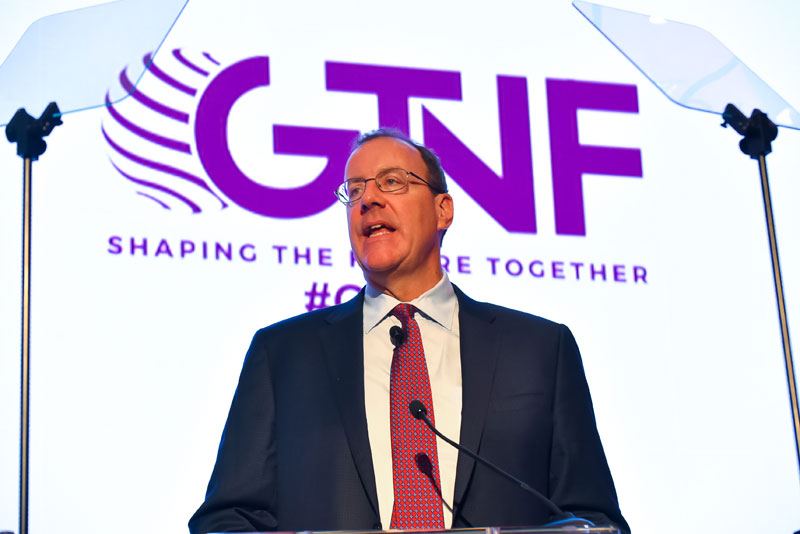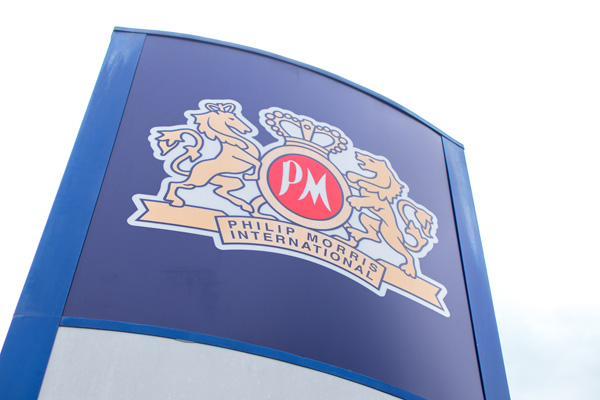The Altria Group continues to grow and remain profitable in a constantly changing tobacco market.
By Timothy S. Donahue

The Altria Group is always evolving. As cigarette sales started to slump, the largest tobacco company in the U.S. began to diversify. In 2008, Altria purchased U.S. Smokeless Tobacco Co. for $11.7 billion. The acquisition allowed Altria to expand beyond cigarettes, adding the successful smokeless brands Copenhagen and Skoal to its portfolio. The purchase also included Ste. Michelle Wine Estates, which allowed Altria to further diversify its portfolio. Ste. Michelle is among the top 10 producers of premium wines in the U.S.
A decade later, the cigarette industry began to see major disruption by the vapor industry. As the growth of e-cigarettes accelerated, Altria entered the vapor business. At the end of 2018, the tobacco company invested $12.8 billion in Juul Labs, taking a 35 percent share. Around the same time, Altria took a $1.8 billion equity stake in Cronos Group, a Canadian marijuana company. Altria now has a 45 percent stake in Cronos with the option to boost its share to 55 percent.
Most recently, Altria, through its subsidiary Philip Morris USA, introduced IQOS, a revolutionary heat-not-burn device, to the U.S. market. It was only the second time that the U.S. Food and Drug Administration (FDA) allowed a new tobacco product on the market through its premarket tobacco product application (PMTA) process, and IQOS was the first next-generation product to receive a PMTA approval. Altria has an agreement with Philip Morris International (PMI) to sell the device in the U.S. Globally, IQOS is available in more than 45 countries, and PMI estimates there are currently 12 million IQOS users.
Juul Labs, IQOS and Cronos are expected to give Altria alternate, fast-growing revenue sources as tobacco smoking rates continue to fall, according to investment analysts. As a result, Altria has remained one of the most profitable companies. During its 2019 third quarter and nine months business results conference call in October, Altria reaffirmed its 2019 full-year adjusted diluted earnings per share (EPS) guidance and announced a new 2020–2022 adjusted diluted earnings per share growth objective.
In August, Altria’s board of directors increased Altria’s regular quarterly dividend for the 54th time in the past 50 years. Altria’s current annualized dividend rate is $3.36 per share (up from $3.20 a share at this period last year), representing an annualized dividend yield of 7.3 percent as of Oct. 28, 2019 (up from 5.2 percent during the same period in 2018). Altria paid $1.5 billion in dividends in the third quarter (up from $1.3 billion for the same period in 2018).
“Our core tobacco businesses delivered excellent third quarter financial results. Our 2019 plans remain on track, and we reaffirm our guidance to deliver full-year 2019 adjusted diluted EPS growth of 5 percent to 7 percent. We continue to believe the evolution of the tobacco industry represents a significant opportunity for Altria,” said Howard Willard, Altria’s chairman and CEO.
“In light of these considerations, we announce a compounded annual adjusted diluted EPS growth objective of 5 percent to 8 percent for the years 2020 through 2022. We believe this new growth objective provides us the flexibility to make investments in noncombustible offerings for the long term, generate sustainable income growth in the core tobacco businesses and return cash to shareholders through a strong dividend. We also expect to maintain our dividend payout ratio target of approximately 80 percent of adjusted diluted EPS during this period.”
During the results conference call, Willard also announced that Altria was writing down its investment in Juul Labs by more than a third, recording a $4.5 billion pretax charge against its third quarter earnings. “While there was no single determinative event or factor, Altria considered impairment indicators in totality, including increased likelihood of (FDA) action to remove flavored e-vapor products from the market pending a market authorization decision, various e-vapor bans put in place by certain cities and states in the U.S. and in certain international markets, and other factors,” Willard said.
Change for the better
While Altria’s future still looks bright, Willard acknowledged that there are some hurdles to jump, as evidenced by the Juul Labs write-down. The U.S. is battling what the FDA has termed an “epidemic” of youth vaping, for example. The vapor industry has also come under attack in the wake of an outbreak of vaping-related lung injuries in the U.S. Although the majority of victims reported vaping THC liquids, often obtained on the black market, some reported vaping nicotine liquids, and no single cause has been identified thus far.
At press time, the FDA was also considering a ban on flavors in e-liquids as regulators seek to curb youth use. During the Global Tobacco & Nicotine Forum (GTNF) in September, Willard announced that Altria executive K.C. Crosthwaite would replace then Juul Labs CEO Kevin Burns to “help Juul [Labs] urgently confront and reduce underage vaping.” Willard also announced that Juul Labs would suspend all digital and print advertising and refrain from lobbying the FDA or the Trump administration over PMTA rules or flavor bans.
“This is a pivotal moment for the industry, and strong action and leadership are needed … vaping is at an inflection point … the public has legitimate concerns about marketing practices, and flavored products and vaping products, including those that are illegal, are at the center of a national investigation,” said Willard. “Consumers are concerned and unclear about the health risks of these products and … policymakers are responding to the increased demand for action.”
At the time of writing, eight states had banned flavored vapor products while others were considering banning flavors and even possibly banning vapor products outright. In September, the Trump administration announced its intent to pull “youth-friendly” flavored e-cigarettes from the market until they are approved by the FDA. Willard said that, given the tremendous progress in harm reduction over the past 30 years, he finds these challenges discouraging.
Nonetheless, he remains optimistic.
“Many of the leaders in this room … have confronted significant challenges before and have the ability to change this trajectory,” said Willard. “The next steps we take are critically important. It won’t be easy and requires us to think and act differently when put into the context of the 37 million adult smokers in the U.S. To me, it’s an easy decision to take bold and compelling action,” he said. “In our view, bold action requires thinking not in weeks or months but in terms of years as we try to change the current course and preserve the long-term potential of vaping and harm reduction.”
Willard said that tobacco (and vapor) companies must confront youth e-vapor use with real solutions while remaining focused on reducing youth use of all nicotine products. One way to help overcome the challenge is by raising the minimum purchase age for tobacco and vapor products from 18 to 21. Several states and municipalities have already enacted the increase. Willard said that Altria supports the action and “that raising the minimum purchase [age] to 21 is the most effective action” for reducing youth use. “We would like to see it the law of the land,” said Willard, adding that raising the minimum age to 21 would guarantee that “almost no high school student could purchase tobacco products legally.”
There isn’t an easy fix to the challenges facing next-generation tobacco products. Driving down underage vaping rates won’t happen overnight and will require the efforts of industry players, lawmakers and regulators alike, according to Willard. “Unlawful products that skirt the law harm legitimate manufacturers and hinder the collective progress on eliminating youth vaping,” he said. There is also a large amount of misinformation being spread about next-generation tobacco products, and Willard said the industry should not allow misinformation to drive policy.
“It’s on manufacturers to continue innovating in creating noncombustible products,” he said. The FDA, he added, should optimize the PMTA process, “creating a more fluid, predictable process that reviews and decides on applications in an appropriate time period and is transparent with the industry, adult tobacco consumers and public health,” said Willard. “Innovation and harm reduction, unfortunately, cannot coexist within the process we have today. An unpredictable process discourages innovation and investment … there must be clear rules of the road to encourage manufacturers to develop new products and invest in scientific research. Good science is at the foundation of progress.”











